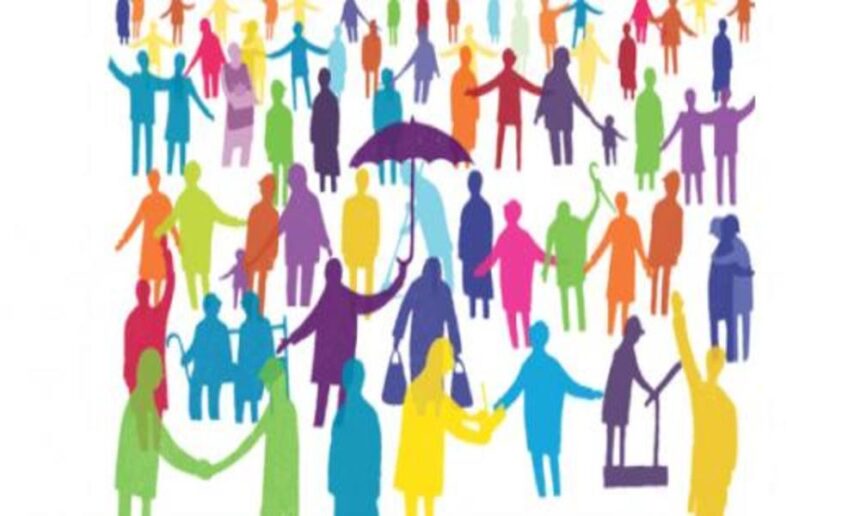Social welfare is defined in ‘The Law on Social Welfare of Mongolia’ as “the state provision of pension and benefits and specialized services to meet the basic needs of citizens with poor health, who lack family care, and are unable to lead a normal life independently or without assistance, also those with special needs, and those who necessitate social welfare assistance.”
Social welfare is inevitable in all humane societies. Governments in all countries formulate and implement policies to take care of certain segments of society. However, the results of those policies vary.
In Latin America, poverty has been drastically reduced by requiring the parents to attend trainings as well as sending their children to school and getting them vaccinated in order to receive social benefits. In Australia, social welfare is strictly need-based and anyone can apply, but only the requests of those who need it get approved.
Social Welfare in Mongolia
The Mongolian Ancient Empire had practices to alleviate the poverty caused by natural disasters and wars, and to care for the elderly, orphans and the disabled. According to the “Secret History of the Mongols”, the Mongolian government /1206/ had a “Fund to take care of the poor”. Eight hundred years later, Mongolia’s public welfare system has expanded beyond only the impoverished. Currently, the government provides 551 benefits and services of 16 types and 72 categories to 800,000 people or one in four citizens every year.
Social welfare is fully funded by the state and by local budgets. In 2015, for example, 260.6 billion tugriks or 1.1 percent of GDP was spent on social welfare, and the figure goes up to 2.1 percent if child allowances are taken into account. Social welfare is widespread nowadays and has come to a point where economic development is unobtainable.
“300,000 young people in Mongolia do not work and are not registered in the labour market. Young people are reluctant to get an education or get a job because of the widespread welfare throughout the country” said Hiromichi Katayama, head of UNESCO’s Youth Literacy and Skills Division. The World Bank’s report “Mines and Minds” that was published last week noted that “In Mongolia, social welfare is not directed at the target group, and is too generous and inefficient, thus, it cannot lay the foundations for a diversified economy. Mongolians are benefitting enormously from the mining industry, but they are not distributing it properly”.
It is true that we Mongolians spend our money on consumption and not on sectors that could potentially generate income in the future.
Welfare and the Labour Market
Today, most employers are irritated by the lack of people willing to work. Indeed, the biggest challenge for SMEs (small to medium enterprises) is not only money but also human resources. Large companies, on the other hand, compete fiercely for a small number of skilled workforce available in the labour market.
Many people choose to enter informal sectors because some jobs entail costs as high as as their pay or even more (including non-financial costs). This is one of the main reasons for the absence of people available for low-paid jobs that require minimal skills. Moreover, for many women, unemployment is also caused by problematic factors such as ill family members and taking care of one’s children.
Recently, the gap has been widening between the skills and expertise acquired by young people and the requirements from employers. This would have to be addressed through the development of multidisciplinary programs focusing on consolidating general skills applicable to various fields. The 2015 study by Rand sheds light on this issue.
In countries such as the United Kingdom and Germany, one of the functions of welfare programs is to find a job for the recipient. If an able-bodied person refuses a job offer twice or three times in a row, they get disqualified from the program. Furthermore, poverty welfare has also been shifted to “child poverty welfare” with a focus on the future, not addressing everyone.
New Welfare System
In Mongolia, people’s income exceeds their productivity. In order to increase the social labour productivity, we need to develop sectors apart from mining that have high output and high potential for generating future income. Although the number of highly educated workforce has increased, they continue to emigrate. This “brain drain” is caused by the absence of an environment to accommodate them and utilize their skills. This can only be solved by creating the right institutions and the right environment.
Mongolia needs to review its welfare policy once again, conduct an impact assessment of each welfare program, and implement social welfare reforms.
Finally, the necessity has emerged to have a system where taxes are paid not by employers, but by employees. Not every employee fully understands that they pay a third of their salary to the government. This is because employees pay their payroll taxes through their employers, not by themselves. The employer transfers the tax to the state and pays the rest to the employee as salary. If everyone got their full salary and then paid their taxes, they would be more willing to monitor the activities of the government which operates with the taxpayers’ money. This is the key to civil oversight of the government in democratic countries.
In addition, once everyone starts paying their own taxes, it will be much easier to determine who should receive welfare benefits and who should be expected to work. The most effective tool for a fairer distribution of income within the society is the provision of tax refunds and additional benefits for taxpayers whose household income falls below a certain level.
2020.09.28
Trans. by Riya.T and Munkh-Erdene.D












